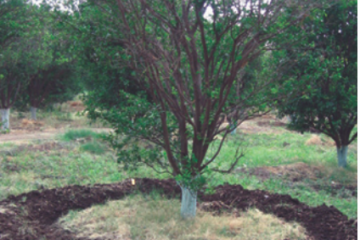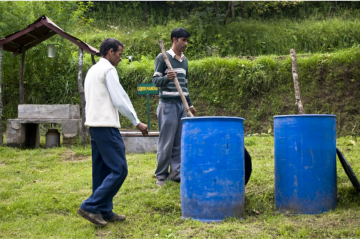Farmyard waste/ghura (ukirda) composting with S-9 is the simplest way to convert farm waste into high quality compost.
It is a common practice across India to dump milking animal shed waste and farm waste along the farms, barns and village lanes. These dumps are known by different names in different regions. They are called ‘parsa’ and ‘sottar’ in Uttarakhand,
‘Ukirda’ in Maharashtra, ‘Ghura’ in MP, ‘Mak is mal’ in Sikkim, etc. These dumps are important raw material sources for organic matter and carbon that help the soil maintain soil fertility, but are seldom used in an optimum way.
SUPA innovatively uses S9 inoculum to convert these dumps into high quality
compost. The S9 treated dumps/heaps also checks unhygienic conditions in the village.
Required materials
ӧ Organic matter (commonly present in village/farm)
ӧ 400-500lts of water ӧ S9 – 1kg Procedure
ӧ Approximately 1-1.25 tons of compost can be produced with a 15 feet long, 5 feet wide and 4 feet high heap.
ӧ To start with, shape the heap with shovel in the abovementioned size. The alignment of the heap should be along east west directions for better results.
ӧ Slowly water the heap for 3-4 days to moisten the dried lumps and organic materials.
ӧ Make a solution of 1kg S9 in 13lts water by stirring clockwise and anti-clockwise alternately for one hour.
ӧ Make a minimum of 13 holes of nearly 1 feet depth in zig zag pattern over the upper layer of the heap with bamboo/stick and pour about 1lt of S9 solution in each hole. Close the holes and spread the remaining solution all over the heap.
ӧ Cover the heap with a thin layer of dung and clay paste or waste dry matter. ӧ The compost would be ready within 40-60 days.



0 Comments